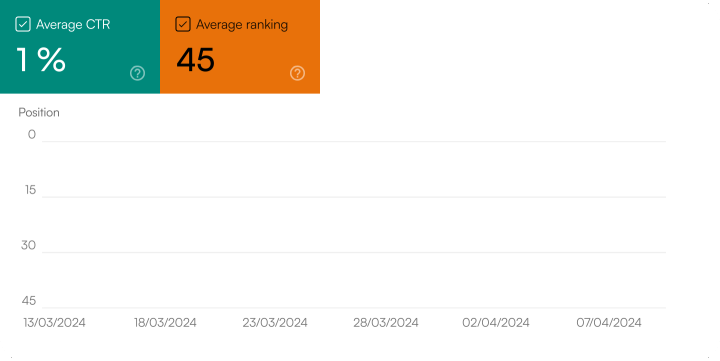
The Truth About Generating Fake Traffic for Websites
.png)
If you're searching for information about fake traffic for websites, you're not alone. Many website owners wonder if artificially boosting their visitor numbers could help their business. The short answer? It's almost always a bad idea—but let's dive into why, what fake traffic actually is, and what you should do instead.

What is Fake Website Traffic?
Fake website traffic refers to non-human or artificially generated visits to your site. These aren't real people genuinely interested in your content or products. Instead, fake traffic typically comes from:
- Bots and automated scripts that mimic human browsing behavior
- Click farms where low-paid workers repeatedly visit websites
- Proxies and VPNs used to mask the origin of visits
- Botnets — networks of infected computers controlled remotely
- Referral spam designed to inflate your analytics numbers
Essentially, it's traffic that looks good on paper but provides zero real value to your business.
Why Do People Look for Fake Traffic?
Before we get into the dangers, let's understand why someone might be tempted to use a website traffic generator:
Misguided SEO attempts: Some believe that more traffic equals better search rankings. Unfortunately, Google's algorithms are far too sophisticated to fall for this trick.
Boosting appearance and social proof: A site with high visitor numbers might seem more credible to potential advertisers or investors. However, this is incredibly short-sighted and can backfire spectacularly.
Testing purposes: This is the only potentially legitimate reason to use fake traffic—testing server load capacity or verifying that your analytics setup is working correctly. Even then, there are better testing tools available.
Competitive sabotage: Some unethical actors might send bot traffic to competitors' sites to skew their analytics or trigger ad fraud penalties. We won't elaborate on this practice, as it's both unethical and potentially illegal.
The Serious Risks and Dangers of Using Fake Traffic
Here's where things get real. Using fake traffic isn't just ineffective—it can seriously damage your website and business.
Analytics Distortion
Your data becomes completely unreliable. When your analytics show thousands of visitors but zero conversions, how do you make informed business decisions? You can't tell which marketing campaigns actually work, which content resonates with real users, or where to invest your resources.
Ad Fraud and Revenue Loss
If you're running ads on your site, bot traffic creates invalid clicks that waste advertisers' money. This can lead to:
- Being banned from ad networks like Google AdSense
- Legal liability for ad fraud
- Complete loss of advertising revenue
- Damage to relationships with direct advertisers
SEO Penalties
Google's algorithms are incredibly sophisticated at detecting manipulation attempts. Using fake traffic to try to boost your rankings can result in:
- Severe ranking drops
- Manual penalties that are difficult to recover from
- Complete removal from search results
- Loss of all organic traffic you've legitimately earned
Brand Reputation Damage
If clients, partners, or investors discover you've been using fake traffic, your credibility evaporates. In the age of transparency, these secrets rarely stay hidden for long.
Security Vulnerabilities
Malicious bots don't just inflate your numbers—they can probe for security weaknesses, scrape your content, or even launch attacks on your infrastructure.
Wasted Resources
You're literally paying for traffic that will never convert into customers, subscribers, or any meaningful engagement. That money could be invested in strategies that actually work.
How to Detect Fake Website Traffic
Worried you might already have bot traffic? Here's how to spot it in Google Analytics:
Red flags to watch for:
- Unusually high bounce rates (90%+ on most pages)
- Extremely short session durations (often under 10 seconds)
- Traffic from suspicious geographic locations that don't match your target audience
- Sudden spikes in direct traffic with no clear source
- Specific referral sources sending massive amounts of low-quality traffic
- Unusual user flow patterns where visitors don't behave naturally
- Browser or OS inconsistencies (outdated browsers, unusual configurations)
Tools to help detect and block bot traffic:
- Bot detection software and services
- Google Analytics filters to exclude known bots (enable this in your view settings!)
- CAPTCHAs and reCAPTCHA implementation on key pages
- Server logs analysis to identify suspicious patterns
- Third-party analytics platforms that specialize in traffic quality
Legitimate Alternatives to Gain Real Website Traffic
Ready for the good news? There are proven, ethical ways to grow your website traffic that actually benefit your business.
Content Marketing
Create high-quality, valuable content that answers your audience's questions and solves their problems. Blog posts, videos, podcasts, and infographics that genuinely help people will naturally attract visitors.
SEO Best Practices
Focus on legitimate search engine optimization:
- Thorough keyword research to understand what your audience searches for
- On-page optimization including title tags, meta descriptions, and header structure
- Technical SEO improvements like site speed, mobile responsiveness, and proper indexing
- Creating content that satisfies search intent
Interestingly, tools like ClickSEO.io take a different approach by simulating real user behavior to help test and optimize your site's search presence. Unlike bot traffic, ClickSEO.io is designed specifically for SEO testing purposes, helping you understand how your pages perform in search results through controlled simulations. However, always use such tools responsibly and in accordance with search engine guidelines.
Social Media Marketing
Build genuine communities on platforms where your audience hangs out. Engage authentically, share valuable insights, and watch the traffic flow naturally to your website.
Paid Advertising
When done right, platforms like Google Ads and Facebook Ads target real users who are actually interested in what you offer. Yes, you pay for this traffic, but these are real potential customers.
Email Marketing
Build an engaged subscriber list by offering genuine value. Your email subscribers are some of the most qualified traffic you can get—they've already expressed interest in hearing from you.
Backlink Building
Earn authoritative links from reputable websites in your niche. This not only brings referral traffic but also improves your search rankings legitimately.
Real Success vs. Fake Numbers: What Actually Works
Consider this: Would you rather have 10,000 fake visitors who bounce immediately, or 100 real visitors who spend time on your site, engage with your content, and potentially become customers?
Sites that focus on organic growth strategies build sustainable businesses. They develop loyal audiences, improve their products based on real feedback, and see genuine revenue growth. Those who chase fake traffic numbers often find themselves in an endless cycle of paying for worthless clicks while their business stagnates.
Real traffic compounds over time. Each quality piece of content, each satisfied customer, and each earned backlink contributes to long-term growth. Fake traffic? It disappears the moment you stop paying for it, leaving nothing behind except potentially damaged analytics and reputation.
Conclusion: Why Real Traffic Always Wins
Here's the bottom line: fake traffic for your website might seem like a shortcut, but it's actually a detour that leads nowhere good. The risks far outweigh any perceived benefits, and in the long run, you're only hurting yourself.
Real, organic traffic takes more time and effort to build, but it delivers what actually matters: genuine user engagement, conversions, revenue, and sustainable growth. Every hour you spend creating valuable content or improving your SEO is an investment in your site's future. Every dollar spent on fake traffic is money thrown away.
Focus on strategies that attract real people who are genuinely interested in what you offer. Build something worth visiting, and the traffic will follow. That's not just better for your analytics—it's better for your business, your reputation, and your long-term success.
Your website deserves real visitors. Give them a reason to come, a reason to stay, and a reason to come back. That's how you win at the website traffic game.






